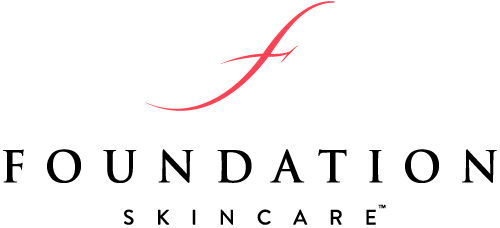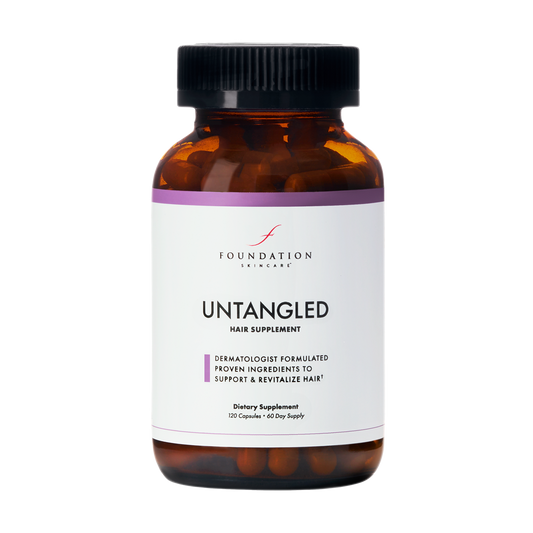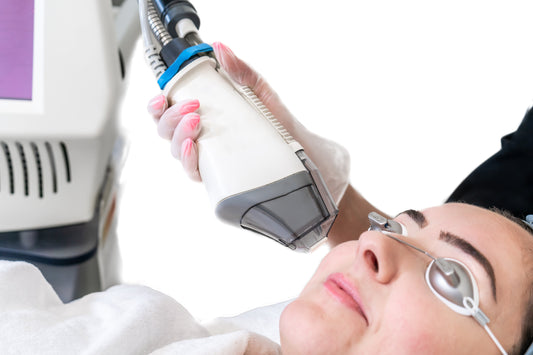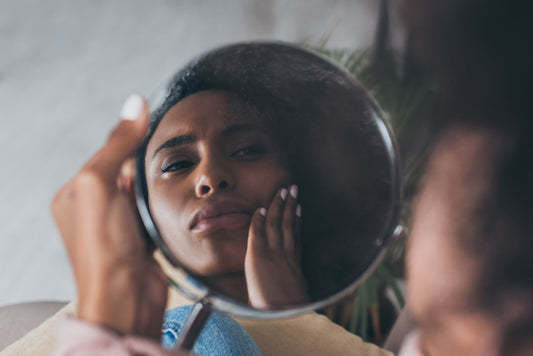Browsing the hair care aisle can be daunting, especially if you’re not sure what most of the ingredients are on the label. Should you choose hydrating? Doesn’t everyone want hydrated hair? Or should you choose thickening? Thicker hair is good, right? Then there’s strengthening, fortifying, clarifying, color-safe…the list goes on and on.
This guide will help you choose the right shampoo and conditioner for your hair type and steer you away from ingredients that may spell for your hair health (and the environment).
How to Understand Your Hair Type & Specific Concerns
Before selecting a shampoo and conditioner, it's crucial to identify your hair type, scalp type, and any specific concerns, such as brittleness, oiliness, frizz, or damage. Here are some tips to help you identify your hair and scalp type:
When it comes to hair type, you might consider factors like density (thin, thick, or somewhere in between) and texture (straight, wavy, or curly). Different hair textures and densities will respond uniquely to specific ingredients.
The same can be said for scalp type. Is your scalp mostly dry or flaky? Or do you produce so much oil that your hair often appears greasy? In some cases, your scalp might be oily and flaky.
As we make suggestions below, we’ll keep these different hair types, scalp types, and specific concerns in mind to help guide you toward shampoos without harmful ingredients, shampoo ingredients to avoid, the best conditioner ingredients, and more.
Balancing pH Levels for Healthy Hair
pH refers to how acidic or alkaline a substance is, with 0 being the most acidic (like battery acid), and 14 being the most alkaline (think drain cleaner). A pH level of 7 is considered neutral (like water).
The ph level of a hair shaft is 3.67 and the scalp pH measures at 5.5. Studies show that a substance with an alkaline pH may raise the negative electrical charge of the hair’s surface, leading to increased friction between hair fibers. This can cause hair damage or breakage.1
Lower pH of shampoos (5.5 or lower) are therefore preferable if you’re looking to reduce breakage and frizz or generate less negative static electricity on your hair’s surface. If you use a shampoo with a pH level of 5.5 or higher, then you must use a conditioner with a low pH to counteract the effects of the shampoo and reinstate balance.
Not every haircare brand will include the pH level of their shampoo or conditioner, though you can look for terms like “ph balancing” or “low ph” on the label. Always proceed with caution when choosing a shampoo or conditioner that does not mention pH on its label or website.
UnTangled Hair Supplement
• Reduces shedding & thinning
• Strengthens hair follicles
Sale price
$65
Essential Moisturizing Components
Everyone wants moisturized hair, but how do you strike the perfect balance without hair becoming too oily?
If your hair and scalp are dry, then opt for a shampoo and conditioner designed to moisturize or hydrate. If your hair and scalp are oily, then choose a shampoo and conditioner with labels that indicate their ability to volumize or clarify over “moisturize.” And if your scalp is oily but your hair is dry, then choose a shampoo designed for an oily scalp and a moisturizing conditioner, but only apply the conditioner to your ends. Some experts even suggest a “double shampoo.” This entails using two separate shampoos: one for your scalp and another for your hair.2
In the following section, we’ll discuss which moisturizing ingredients are healthy, like coconut or olive oil. Other ingredients, like parabens and phthalates, you'll find are not so great.
Keep reading to find out which ingredients to look for in your shampoo and conditioner, and which ingredients to avoid.
Ingredients to Look For
From sulfate-free shampoos to paraben-free conditioners, here are some of the best ingredients and formulations you should look for in your shampoo and conditioner.
Proteins, Natural Oils, Sulfate-Free Formulas
- Proteins: Healthy proteins like keratin, biotin, and wheat protein help to strengthen hair. Though some of these proteins, especially biotin, are said to help lengthen hair, they typically do not promote growth. But they can make hair more resistant to breakage, which can give the appearance of longer hair. If you’re dealing with hair loss, use a targeted hair growth serum like Foundation Skincare’s Hair Serum or a hair growth supplement like UnTangled instead. These products provide the building blocks your body needs to stimulate, accelerate, and revitalize a stagnant hair growth cycle. Learn more about how these products work together.
- Natural oils: Natural oils like coconut, olive, argan, avocado, and jojoba help to repair and moisturize hair. But do not opt for mineral oil, which is petroleum-based.
- Sulfate-free formulas: Sulfates are chemicals typically derived from petroleum that help hair products create a lather. They have harmful long-term effects on the environment and can irritate your eyes, skin, and lungs, as well as increase your risk for cancer.3
Silicone-Free Options, Vitamins & Minerals, Hypoallergenic
- Silicone-free options: Derived from silicon dioxide, or silica, silicones are chemicals added to hair products to reduce frizz and protect color in color-treated hair. While there is not enough evidence to prove they are toxic, silicones can lead to product buildup in hair, especially if they are non-soluble. They can cause hair to become dry and brittle. It’s best to choose silicone-free products to avoid this, or water-soluble silicones.
- Vitamins & minerals: Vitamins to look for in your shampoo and conditioner include vitamin B3, or niacinamide, which increases hair fullness (also found in FS Hair Serum and UnTangled Hair Supplement); biotin and vitamin C for strength and repair; vitamin E for moisture and shine; and vitamin A for thicker hair (all vitamins also found in UnTangled Hair Supplement). Minerals (not to be confused with synthetic mineral oil) to consider include magnesium, potassium, and selenium, which can be found naturally in hair products infused with sea salt.
- Hypoallergenic: If you have a sensitive scalp or allergies, it’s essential to look for hypoallergenic products to avoid irritation or dryness.
Ingredients to Avoid
You already know to steer clear of products containing phthalates, sulfates, and parabens, but how do you identify these ingredients? Keep reading to find out how these chemicals might appear on a product label.
Phthalates, Sulfates, Parabens
- Phthalates: Look for ingredients like diethyl phthalate (DEP), dimethyl phthalate (DMP), or dibutyl phthalate (DBP). These are usually easy to identify.
- Sulfate: Look for common sulfates like sodium lauryl sulfate (SLS) or sodium laureth sulfate (SLES).
- Parabens: Look for ingredients like butylparaben, ethylparaben, propylparaben, and methylparaben.
Formaldehyde, Artificial Fragrances & Colors, Alcohol
- Formaldehyde: Formaldehyde and its variations, like formalin and methylene glycol, are to be avoided at all costs. When heated (blow-drying, curling, or straightening), this chemical is released into the air as a gas, and can increase the risk for cancer.4
- Artificial fragrances and colors: Artificial fragrances are known to strip hair of its natural oils, irritate skin (which increases the risk of hair loss), and may pose health risks like reproductive harm or asthma. Artificial colors can compromise scalp health and also increase your cancer risk.5
- Alcohol: Certain alcohols like propanol, propyl alcohol, ethanol, and isopropyl can make hair dry, brittle, and prone to breakage, as well as irritate the scalp, especially if you have sensitive skin.
Choosing the right shampoo and conditioner is essential for maintaining healthy, beautiful hair, and protecting the environment from toxins. To find more tips on supporting your hair and skin health and to look for solutions for hair loss, visit the FS Journal and learn more about our UnTangled Essentials Kit.
References:
-
https://www.ncbi.nlm.nih.gov/pmc/articles/PMC4158629/
-
https://www.byrdie.com/shampoo-101-choosing-the-right-shampoo-3517815
-
https://www.healthline.com/health/beauty-skin-care/sulfates#product-list
-
https://cancerfactfinder.org/occupational-environmental-exposure/shampoo-with-formaldehyde
-
https://www.ncbi.nlm.nih.gov/pmc/articles/PMC10199648/





